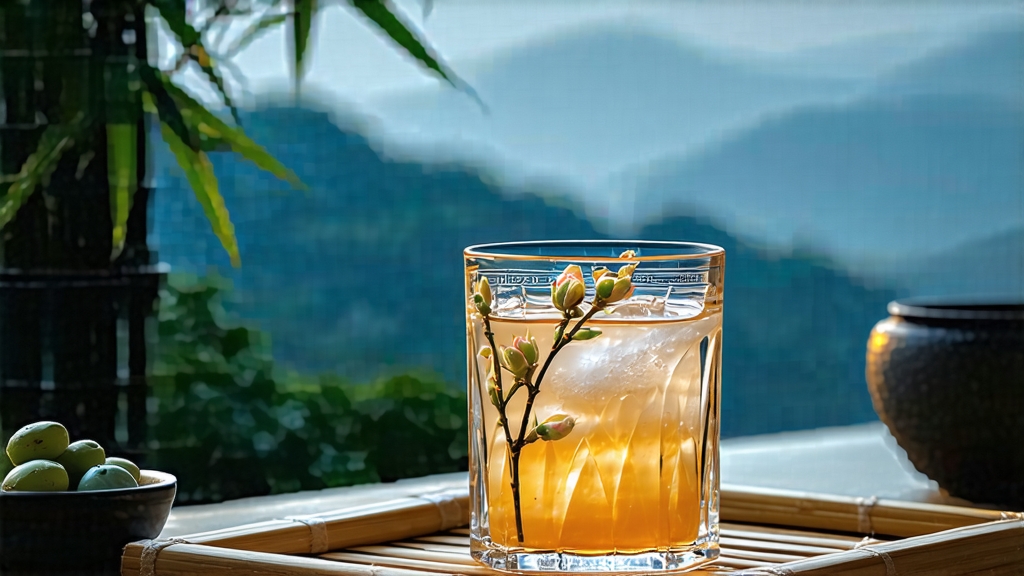
If green tea is the youthful burst of spring and pu-erh the wise elder of the tea family, then Bai Hao Yin Zhen—literally “White Hair Silver Needle”—is the moonlit poet who arrives quietly, stays briefly, and leaves a memory that lingers longer than the night itself. Revered as the pinnacle of Chinese white tea, this silvery down-covered bud tells a story that begins in the coastal mountains of Fujian during the brief window between late March and early April, when the air is still cool enough to keep the dew from evaporating, yet warm enough for the tea bush to believe summer is possible.
Historical whispers place Yin Zhen’s birth during the Song dynasty’s imperial gardens, but verifiable records only surface in the late 1700s, when the Qing court levied it as “tribute tea.” Legend claims that only virgins armed with golden scissors were allowed to clip the unopened buds at dawn, dropping them into porcelain bowls floating on buffalo milk so the leaf never touched human skin. While modern pluckers ride electric scooters to the garden gate, the reverence remains: one gentle snap, one perfect bud, no leaf, no stem, no damage to the tiny white hairs that will later shimmer like frost in the cup.
The cultivar responsible for this elegance is almost always Fuding Da Bai—literally “Big White”—a bush whose spring buds can stretch to 3.5 cm, plump with amino acids and covered in a velvety trichome cloak. Gardens sit between 200–600 m on red granitic soils that drain the plentiful subtropical rain; oceanic clouds arrive each afternoon, wrapping the rows in a cool mist that slows photosynthesis and concentrates the sweet, hay-like compounds that give Yin Zhen its signature “milk and honey” aroma.
Craft begins the moment the bud leaves the tree. Spread one bud thick on bamboo trays woven from two-year-old mao zhu, the trays are slid into a sun-dappled pavilion whose slatted walls filter the ultraviolet glare. For roughly 40 minutes the leaf dehydrates, losing about 10 % moisture while enzymes wake and begin nibbling at larger molecules, releasing floral volatiles. Workers shuffle the trays every ten minutes so no bud bakes on the bottom; the motion looks like a slow-motion tai-chi performed by dozens of hands. When the sun climbs too high, the trays are stacked and wheeled indoors where temperature hovers at 26 °C and humidity lingers around 65 %. Here the buds rest for 24–36 h, entering the mysterious phase white-tea makers call “walking the fragrance.” No heat is added, no pan, no roll—only time and air. Oxidation proceeds at a glacial pace, turning the bud’s outer skin a faint sepia while the interior remains jade. Finally, a 20-minute bake at 50 °C halts enzyme activity, locking in the pale straw liquor color and preserving the maximum volume of down.
Grading follows a lunar calendar of its own. The first two days of picking—when the bud is fattest and the down brightest—become “Imperial Silver.” Anything gathered after the Qingming festival is relegated to “standard” grade, still delicious but lacking the iridescent shimmer that makes the dry leaf look like a pile of miniature shooting stars. True connoisseurs look for the “three whites”: bud tip white, first leaf white, stem base white, a trifecta that occurs only when the bush is old enough to have developed a woody base yet young enough to push succulent shoots.
To brew Yin Zhen is to negotiate with fragility. Begin with a tall, thin glass or a gaiwan of porcelain so thin you can almost read a newspaper through it; silver needles need room to stand upright, and a wide clay pot will crowd them into a sulky horizontal heap. Water should be neither the rolling boil demanded by black tea nor the 70 °C favored for green; 80 °C on the dot allows the buds to sink slowly, releasing amino acids without scalding the delicate hairs. Use one gram of leaf for every 20 ml of water—about five buds per 100 ml—and pour along the wall of the vessel to avoid bruising. Steep 90 s for the first infusion; the liquor will be the color of early morning sunlight